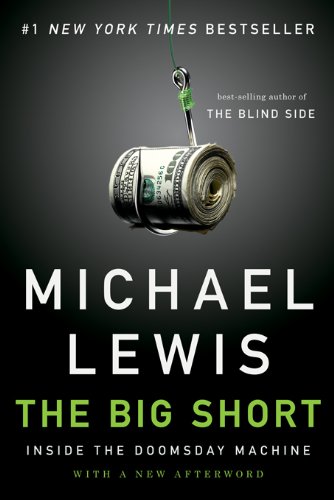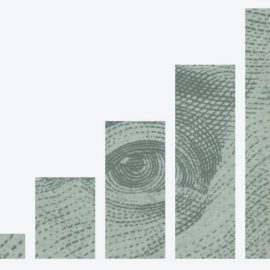

This article is an excerpt from the Shortform summary of "The Big Short" by Michael Lewis. Shortform has the world's best summaries of books you should be reading.
Like this article? Sign up for a free trial here .
How were the credit rating agencies involved in the financial crisis of 2007-2008? Why did they fail so miserably in their role rating subprime?
We’ll cover how credit rating agencies contributed to the financial crisis and why their failures were the result of both incompetence and greed.
The Credit Rating Agencies: Rubber-Stamping Fraud
To understand the credit rating agencies’ part in the financial crisis, we need to understand their relationship with banks.
The credit rating agencies are supposed to play an important role in the financial system. By evaluating the risks and returns of financial instruments, agencies like Moody’s and S&P help investors determine how much they should pay for these products. The pricing system on Wall Street was inextricably tied up with the grades that the agencies applied to the bonds being sold by firms like Goldman Sachs and Deutsche Bank. When Moody’s assigned a triple-A rating to a bond composed of worthless subprime mortgages, that bond became worth far more on the market than it really should have been.
Unfortunately, the big investment banks had become experts in playing the credit rating agencies for suckers. People who worked at the credit rating agencies were widely seen by the big bond traders as second-rate intellects who could be easily manipulated into giving the stamp of approval to complex financial products that they didn’t understand. As one Goldman Sachs trader remarked, “Guys who can’t get a job on Wall Street get a job at Moody’s.”
Traders were surprised to see how easy it was to game the ratings. For example, Moody’s and S&P didn’t evaluate all of the mortgages in the CDOs to see what proportion of them were likely to go bad (and thus, cause the entire bundle to become worthless). All they looked at was the average FICO score (a measure of individual borrowers’ creditworthiness) of the entire portfolio. And a few outliers can always skew an average one way or the other. To be triple-A rated, all the credit rating agencies required was that the average FICO score in the entire pool be 615 (still below the U.S. median score of 723).
Moreover, the credit rating agencies’ models took no account of the effect of the teaser rates. These models assumed that borrowers would be as likely to pay back their mortgages at an 8 percent teaser rate as they would be at a 12 percent adjustable rate. Of course, this made no sense.
Credit Rating Agencies: Thick Skulls, Thin Scores
Thus, the investment banks could sprinkle a few high-quality mortgages into a pool of subprime loans and transform the whole package into an investment-grade bond that could be passed on to gullible investors at wildly inflated prices. In allowing this, the credit rating agencies muddled the difference between averages and medians. A bond made up of all 615 FICO score loans stood a far lower chance of tanking than did a bond composed of one half 550 scores and another half 680 scores (even though both bonds would have the same “average” score). But the latter is what the agencies were short-sightedly marking up as triple-As.
Furthermore, not all FICO scores were created equal. One borrower’s score of 615might mean something totally different than that of another borrower. The agencies didn’t distinguish between “thin-file” and “thick-file” scores. Thin-file scores referred to those borrowers who had minimal credit history. It was easy to have a high score if you’d never borrowed money in the first place. Immigrants who’d never been given loans before thus had artificially high FICO scores.
And there was every incentive for the original lenders and bond traders to create packages of the worst, most un-creditworthy loans. These mortgages were simply the raw materials that they were using to construct their final products—mortgage-backed securities, credit default swaps, CDOs, and ultimately, synthetic CDOs. And, like any business, they wanted cheap raw materials.
On the Take
But the credit rating agencies weren’t just stupid. As Steve Eisman saw, they were corrupt as well. When he and his partners traveled down to Orlando to a subprime mortgage conference, they met with representatives from both Moody’s and S&P.
One woman from Moody’s shocked Eisman’s team with her candor. She had actually done her homework and seen these bonds for the junk that they actually were. But she was told by her bosses that she could not downgrade the bonds.
Although this woman didn’t say so explicitly, the reason was clear—the investment banks hawking these dubious bonds were clients of the credit rating agencies. The ratings agencies were for-profit entities paid by the likes of Goldman Sachs and Deutsche Bank. Of course they weren’t going to alienate a powerful client by slapping a bad rating on one of their premier revenue-generating products.
And the credit rating agencies were making a killing. Since going public in 2000, Moody’s had seen its revenues go up from $800 million in 2001 to $2.03 billion in 2006. Most of this increase came from the fees they received from the Wall Street banks for rating CDO deals. This was a booming business, and the credit rating agencies weren’t going to put a stop to the party by downgrading the bonds of their powerful clients. Essentially, the agencies were paid to accept the ludicrous assumptions of the finance industry: that home prices would continue to rise and that subprime loan losses would be no more than 5 percent.
Whistling Past the Graveyard
In February 2007, just after the investors’ convention in Las Vegas, a publicly-traded, triple-B subprime bond index known as the ABX fell by more than a point on the bond markets. It was the first sign to the outside world that all was not well in the housing markets. Yet to the dismay of the short investors, the subprime market kept humming along, as though there was no impending crisis. The big banks seemed to be blithely ignoring the crisis and the credit rating agencies refused to revise their positive ratings. The big Wall Street firms were insisting that generic “market sentiment” was driving the value of the bonds down, not the poor quality of the underlying loans themselves. The value of the bonds was completely divorced from the subprime loans underpinning them.
For the short-selling investors, it was as though they’d bought cheap fire insurance on a house that was already on fire. It shouldn’t have been this easy—their swaps were worth far more than they’d been purchased for. This incongruity became even crazier as the subprime bond indexes tumbled even further: by June 2007, CDOs had lost 30 percent of their original value. Ledley and Mai began to suspect that the markets were bluffing their way through the crisis, continuing to sell synthetic CDOs created from the original junk bonds. They had no choice: the banks were all so deep into subprime that they couldn’t afford to change their position.
In serving the big banks, the irrational ratings of the credit rating agencies eventually led to the financial crisis of 2007-2008.
———End of Preview———

Like what you just read? Read the rest of the world's best summary of "The Big Short" at Shortform . Learn the book's critical concepts in 20 minutes or less .
Here's what you'll find in our full The Big Short summary :
- How the world's biggest banks contributed to the 2008 financial crisis, greedily and stupidly
- How a group of contrarian traders foresaw the bubble popping, and made millions from their bets
- What we learned from the 2008 crisis - if anything






